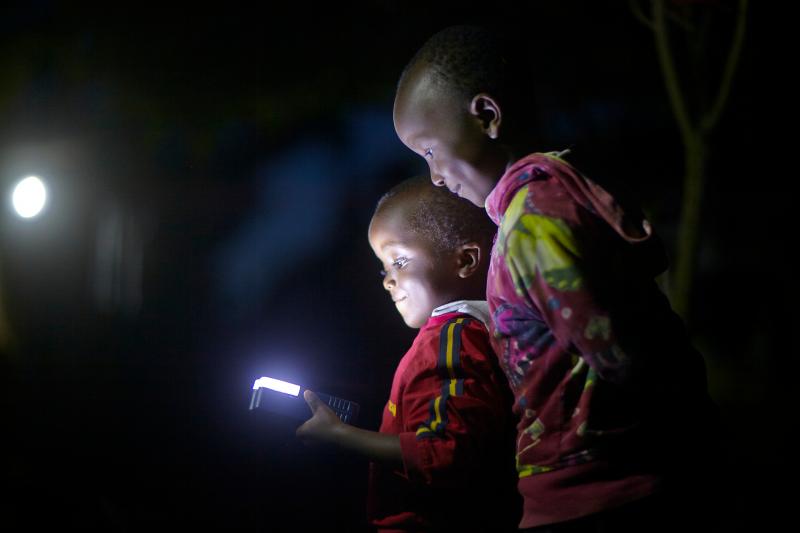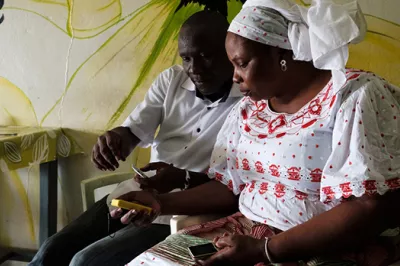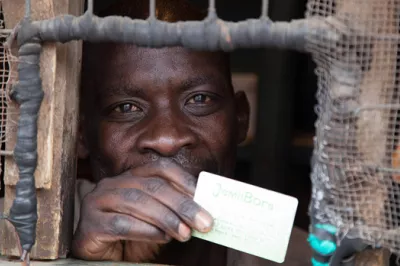Which Markets are Ready for Digital Finance Plus?
HM Queen Máxima, UN Secretary-General’s Special Advocate for Inclusive Finance for Development, reminded us at the Universal Financial Access 2020 event at the recent Spring Meetings of the World Bank and International Monetary Fund that opening accounts is not enough for financial inclusion - we need to link financial inclusion to solutions that address key development challenges. Businesses using financial innovation to reach poor people with essential services - which at CGAP we call digital finance plus (DF+) - are impacting not only financial inclusion, but are also making it easier and more affordable for poor people to get access to essential services they formerly lacked, such as energy and clean water.
These businesses sit at the intersection of multiple market factors, both financial and non-financial. CGAP and McKinsey developed a framework to understand which factors matter most and whether DF+ solutions are more likely to see success in one sector (such as energy) versus another (such as health). We also considered which models within each sector have a higher potential to scale given the broader market structure in a given country. We tested the framework in Tanzania where we see business models emerging across different areas and where the formal financial sector is transforming with the growth of digital finance. We analyzed five sectors - agriculture, health, energy, education and water.
Our analysis, which can be called a DF+ ‘readiness,’ yielded insights into the links between market factors and DF+ and which solutions show the most promise given the conditions in Tanzania. In particular, there were five noteworthy lessons from Tanzania.
Evaluating a market and sector for DF+ readiness requires looking beyond the status of digital finance alone. There are many factors to consider when evaluating a country and sector for DF+ “readiness.” We identified six dimensions that get to the heart of most issues. Three dimensions relate to the enabling environment in the country:
- Access to and reach of mobile infrastructure;
- Adoption and reach of digital finance infrastructure;
- Role of government and regulations (both broadly and sector-specific);
Three additional dimensions relate specifically to the sector in question (i.e., energy, water, health, or education):
- Sector overview, including the impact on poor people, actors and challenges;
- Value chain-based assessment of financial services needs for the sector; and
- DF+ solution feasibility for the sector.
For the market to be “ready,” the three dimensions related to the enabling environment, which impact all sectors, needs to be favorable (a higher score in our assessment). Sector dimensions vary, and, as we explain below, some sectors were more favorably positioned for a DF+ solution than others in Tanzania
There are sectors where finance is a major bottleneck that impedes growth. Through a systematic analysis of each sector’s value chain, we could pinpoint where the financing gaps are most severe and where DF+ solutions could make the biggest difference. The value chain analysis proved useful in determining where consumer-facing financing was needed. For example, we could clearly identify a range of consumer-facing financing as a notable bottleneck for the energy sector value chain. On the other hand, financing gaps in the health sector varied widely and included elements that ranged from the production and development of medicines to the delivery of private services.

Some sectors are likely to have a disproportionate burden of stakeholder complexity and non-financial challenges. The education, health and water sectors face a number of identifiable non-financial challenges and many stakeholders. For example, without addressing challenges related to the quality of care, availability of medical staff, or awareness of illnesses among population, it is hard to imagine how DF+ innovations could unlock access in the health sector. There are similar issues in education, such as quality of instruction. Water presents a complex decentralized stakeholder landscape and many different levels of government are involved.
The energy sector, in particular off-grid energy, shows the most readiness in Tanzania. The regulatory framework and policy environment are relatively conducive to private investment, where the government is creating incentives and investments in off-grid. Off-grid energy enterprises benefit, as developers with less than 100 KW of project capacity experience a minimum of government interference. As a result, stakeholder complexity is minimal where the primary actors are energy enterprises and households with demand for electricity access. We estimate that there are 5 million households that could get electricity through off-grid solutions. A number of off-grid solutions already exist with basic financing solutions including those involving digital finance. Developing end-user financing solutions could further unlock the potential of these models.
Health presents the biggest challenge and is arguably the sector least ready for DF+. To begin with, the availability of free care creates low willingness to pay for necessary services and low supervision leads to sub-optimal care practice. There is a complex stakeholder landscape with a mix of public, private, and faith-based providers and active donors. As mentioned earlier, there are severe non-financial challenges related to the quality of care, availability of medical staff, and awareness of illnesses among population. Without comprehensive reform and heavy role of subsidy, DF+ solutions will struggle to have impact and scale.
What’s next?
To unlock potential in DF+, the following needs to happen in Tanzania, as identified by the assessment:
- Interventions to accelerate the growth of models in sectors with fewer stakeholders and a clearly defined role for the private sector, such as energy.
- Use the energy playbook to encourage private delivery of services in the water and education sectors which had similar feasibility of DF+ solutions as the energy sector. The three major MNOs - Airtel, TIgo and Vodacom - have evolved to become the key drivers of innovation in digital finance in Tanzania and are important partners to engage to scale existing business models across all sectors;
- Make broader changes in the enabling environment including the rollout of the national identity card system (with biometric verification available via smartphone) and increased cell phone use in rural areas where cell phone use gaps still persists.




Comments
This is refreshing and remind
This is refreshing and remind us that Financial Inclusion is not an end by itself. While we all agree that providing access to financial services should aim at responding to recipients' specific needs, we don't do enough when it comes to basic (and empowering) services that poor people lack such as health care and energy. Very interesting.
Add new comment